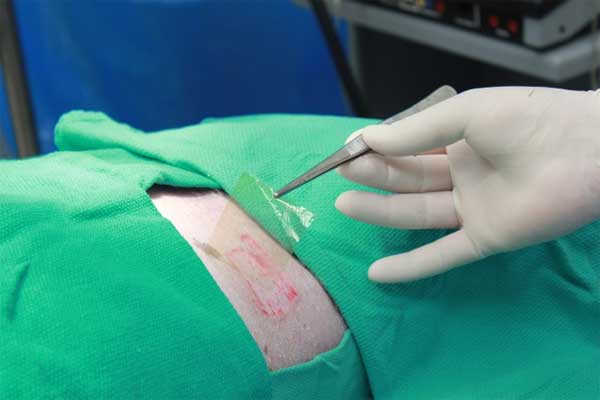|
Polymers/Biopolymers
For Modern Wound Dressing
Wound dressing has remained challenging for some
life-threatening wounds such as burning. Researchers
have been engaged in looking for better solutions. A
review paper given in the “Journal of Material
Sciences & Engineering” ( web link for detailed
paper given at the end of the article ) depicted the
ideal wound dressing based on the mechanism of human
skins, compared traditional wound dressing methods to
modern methods, and reviewed the use of polymers and
biopolymers as advanced materials for wound dressing.

Future Needs for Would Dressings
Despite the various methods and materials for wound
dressings, to date, no wound dressing fully satisfies
the requirements of an ideal substitute for skin ECM (Extracellular
Matrix ). Most wound dressings are limited by fast
degradation, weak adhesiveness and absorption, lack of
drug release properties, poor oxygen permeability, as
well as not being able to prevent protein adhesion
onto the wound dressing surface. It is urgent to
design and fabricate wound dressings which can address
these problems simultaneously, thereby leading to
improved wound management, creating an easy solution
for wounds, and decreasing death rate induced by
severe wounds and bleeding.
Modern Wound Dressing Materials
Synthetic polymers such as polyvinyldene floride (PVDF)
and polypropylene (PP) have been widely used for wound
dressing materials. Poly (ε-caprolactone) (PCL),
polyethylene glycol (PEG), polyethylene oxide (PEO),
polyurethane (PU), poly (vinyl alcohol) (PVA), poly
(lactic acid) (PLA), and poly (lactic-co-glycolic
acid) (PLGA) are frequently used synthetic materials
that have been approved by Food and Drug
Administration (FDA) for biomedical applications, due
to their good biocompatibility, biodegradability and
non-toxic properties. For example, PLGA is
commercially available, inexpensive, biocompatible,
biodegradable, and showed sustained drug release
properties, making it the ideal candidate for drug
delivery and other biomedical applications. Moreover,
Porporato discovered that lactate played an important
role in promoting angiogenesis and wound healing
process, and concluded that PLGA to be the most
suitable polymer to provide lactate for enhanced wound
management. PEG displays excellent biocompatibility,
biodegradability, hydrophilicity and wettability. It
is inexpensive and readily available, and therefore
widely used for biomedical applications. More
recently, Kim has shown that PEG provides anti-fouling
properties, preventing the adsorption of protein and
other biomolecules on to nanofiber surface, which
enhances drug release properties and aids in
maintenance of nanofiber surface properties during
use. Hydrogels and nanofibrous scaffolds based on
these synthetic polymers have been fabricated for
biomedical applications with good mechanical
properties.

However, the application of these synthetic polymers
alone as wound dressings are limited by their adhesive
properties and their ability to accelerate wound
healing process.
Therefore, it is critical to produce a new and
improved wound dressing by synthesizing, modifying,
and systematically designing wound dressing materials
with good mechanical properties while accelerating the
healing process at molecular, cellular and systematic
levels. It is also desirable for wound dressings to
have good drug release properties to further promote
the wound healing process. Detailed research article
is given at the following web link.
(Ref: Journal of Material Sciences & Engineering)
https://www.hilarispublisher.com/open-access/modern-wound-dressing-using-polymersbiopolymers-2169-0022-1000454.pdf |
